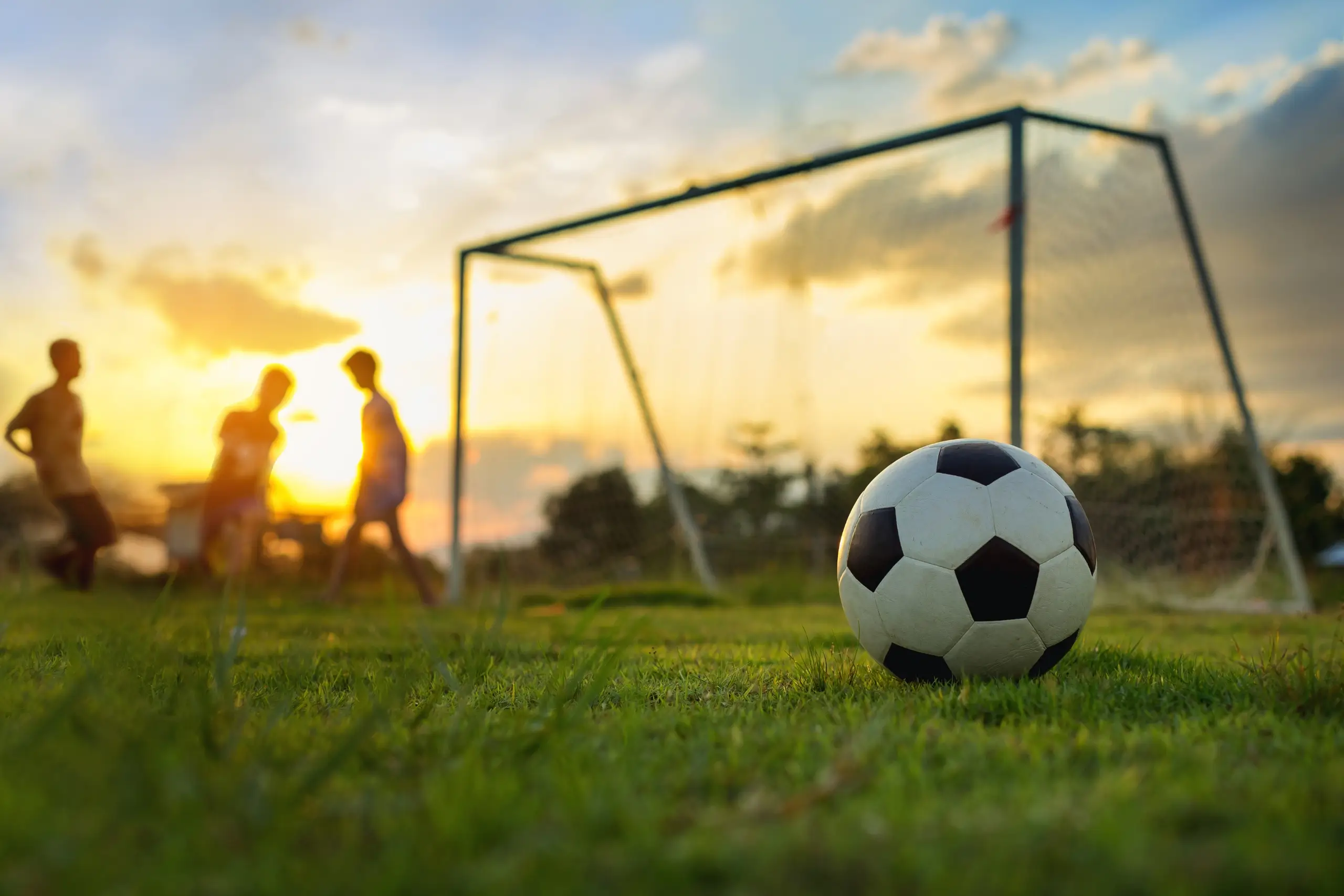Soccer thrills millions worldwide, but the game carries real risks. Players twist ankles, suffer concussions, dehydrate in the heat, and push through overuse injuries. Parents worry about their kids on the field, coaches juggle performance with safety, and athletes often overlook simple steps that could prevent serious harm.
In this article, you’ll read 20 soccer safety tips for 2025 that show you how to protect yourself before, during, and after the game. You’ll learn how to choose the right gear, warm up effectively, recognize warning signs of injuries, and handle emergencies with confidence. These tips apply to kids, beginners, seasoned players, and anyone who wants to enjoy the sport while minimizing risks.
Lace up your cleats and step onto the field with confidence, because when you play smart, you play longer, stronger, and safer.
Why Soccer Safety Is Important?
Soccer is fast, exciting, and loved by millions, but it also carries real risks. Every season, players face injuries such as ankle sprains, knee problems, muscle pulls, and concussions. Even something as simple as uneven ground or a rough tackle can take a player out of the game.
If players ignore safety, small problems can quickly escalate into serious issues. A mild sprain may lead to long-term weakness if not treated properly, and repeated head knocks can increase the risk of lasting brain injuries. Overuse injuries, such as shin splints and tendonitis, often develop slowly but can sideline a player for months.
Safety in soccer isn't just about avoiding pain; it’s about protecting your ability to keep playing. For young athletes, it helps support healthy growth and development. For adults, it prevents setbacks that can cut short their time on the field. Coaches and parents also play a key role by creating an environment where performance and protection go hand in hand.
By focusing on safety, players can stay healthier, perform better, and enjoy more seasons of the game they love.
Common Soccer Injuries
Soccer is a game of speed, agility, and constant movement, which means injuries can happen even in casual play. Understanding the most common ones helps players, coaches, and parents recognize risks early and take preventive measures. Below are some of the injuries athletes experience most often:
- Ankle Sprains: Twisting or rolling the ankle during sudden movements, tackles, or uneven ground.
- Knee Injuries (including ACL tears & meniscus damage): Sharp turns, awkward landings, or collisions often strain or tear knee ligaments.
- Hamstring Strains: Overstretching or sprinting too hard can pull or tear hamstring muscles.
- Groin Pulls: Sudden side-to-side movements put stress on inner thigh muscles.
- Shin Splints: Pain along the shinbone is often caused by overuse, poor footwear, or playing on hard surfaces.
- Concussions: Head-to-head collisions, falls, or being struck by the ball can lead to concussions.
- Fractures (Broken Bones): Leg, foot, or arm fractures from heavy impact or tackles.
- Achilles Tendon Injuries: Overuse or sudden stress can cause tendonitis or, in severe cases, rupture.
- Shoulder Injuries (Dislocations & Sprains): It often occurs when goalkeepers dive or players collide and fall awkwardly.
- Overuse Injuries (Tendonitis, Stress Fractures): Repeated strain from training without enough rest gradually weakens bones and tendons.
20 Soccer Safety Tips to Prevent Injuries on the Field
Soccer is a beautiful game, but it can also be physically demanding. Following the right safety habits not only prevents injuries but also helps you perform better and enjoy the sport longer. Here are 20 detailed soccer safety tips every player, coach, and parent should know.
1. Warm Up Properly
Start every session with light jogging, dynamic stretches, and ball drills. Warming up raises your heart rate, improves blood flow to your muscles, and prepares your body for sudden bursts of activity or intense physical exertion. Skipping this step increases your risk of muscle strains and injuries.
2. Stretch Regularly
Stretch your major muscle groups, hamstrings, calves, quads, and hip flexors, before and after games. Stretching keeps muscles flexible and strong, which reduces the chance of tears. Make it a routine, not just an afterthought.
3. Hydrate Before the Match
Drink water before, during, and after the game to replace fluids lost through sweat. Dehydration makes you feel sluggish, reduces your focus, and increases your risk of cramps. Avoid energy drinks before play, as they can further dehydrate you.
4. Check the Playing Surface
Walk the field before kickoff and look for hazards such as holes, uneven turf, or debris. Many ankle and knee injuries occur because of poor ground conditions. Taking five minutes to inspect the field can prevent weeks of recovery time.
5. Wear the Right Cleats
Choose cleats that fit well and suit the surface, firm ground cleats for natural grass, turf shoes for synthetic fields, and indoor shoes for hard courts. Ill-fitting shoes can cause blisters, foot pain, or even slips that lead to sprains. Replace worn-out cleats regularly.
6. Use Shin Guards Every Time
Shin guards are not optional, they’re essential. They shield your legs from hard tackles, stray kicks, and even accidental clashes. Without them, a single impact could leave you with a painful bruise or fracture.
7. Goalkeepers Need Extra Protection
If you’re a goalkeeper, invest in padded shorts, gloves with finger support, and sometimes even elbow protection. Diving and blocking shots put keepers at unique risk. The right gear prevents both impact injuries and long-term strain.
8. Consider Mouthguards
While not always required, mouthguards protect against chipped teeth, cuts to the lips, and jaw injuries. Custom-fitted mouthguards are more comfortable and provide better protection than basic store-bought ones. Think of it as a small investment for a big smile.
9. Play by the Rules
The rules aren’t just for fair play; they keep players safe. Reckless tackles, pushing, or ignoring referees often result in injuries. Respecting the rules reduces the risk of dangerous contact and keeps the game enjoyable for everyone.
10. Communicate with Teammates
Call out plays, passes, and positioning to prevent accidental collisions. Miscommunication often leads to head clashes, falls, or unnecessary fouls. Clear communication builds teamwork and safety.
11. Watch the Weather
Heat, cold, and storms all affect safety. On hot days, schedule games earlier or later to avoid heat exhaustion. If lightning strikes nearby, stop immediately; no game is worth the risk.
12. Take Breaks When Needed
Listen to your body and rest when you feel exhausted. Overexertion leads to sloppy movement, poor focus, and an increased risk of injury. A short break today can save you from weeks of recovery later.
13. Recognize Concussion Symptoms
If you feel dizzy, nauseous, or confused after a hit, stop playing immediately. Concussions may seem minor at first, but can have serious long-term effects if ignored. Coaches and teammates should also watch for warning signs.
14. Don’t Ignore Pain
Pain is your body’s way of warning you. Playing through pain often makes injuries worse, turning small issues into chronic problems. Step out, get checked, and return only when fully fit.
15. Keep a First Aid Kit Handy
Every team should carry a kit with ice packs, bandages, antiseptic wipes, and tape. Quick access to first aid can stop a minor injury from becoming major. Coaches and captains should know where the kit is at all times.
16. Use the RICE Method for Minor Injuries
Rest, Ice, Compression, and Elevation (RICE) help reduce swelling and pain after minor sprains or strains. Apply ice for 15–20 minutes at a time and keep the injured area elevated. Following this method can speed up recovery.
17. Follow Age-Appropriate Training
Young players should train within safe limits for their age and development. Overloading kids with intense drills or too many matches increase their risk of overuse injuries. Training should strike a balance between skill-building and recovery time.
18. Cross-Train for Strength and Balance
Soccer demands more than just footwork; core strength, balance, and agility are also essential. Add exercises such as planks, squats, and agility ladders to your training sessions. Strong muscles protect joints and improve performance.
19. Get Enough Sleep
Sleep is the body’s natural recovery system. Athletes who don’t sleep enough face slower reaction times, weaker focus, and a higher chance of injury. Aim for 7–9 hours of quality sleep every night.
20. Listen to Your Body
No one knows your limits better than you. If something feels wrong, fatigue, sharp pain, or unusual discomfort, take it seriously. Respecting your body’s signals is the smartest way to stay safe and strong.
Conclusion
Soccer is a sport built on energy, passion, and teamwork, but safety must always come first. By following these soccer safety tips, players of all ages can reduce the risk of injuries, improve their performance, and enjoy the game with greater confidence. Play smart, protect your health, and keep soccer a safe and exciting experience for years to come.































Discussion & Comments